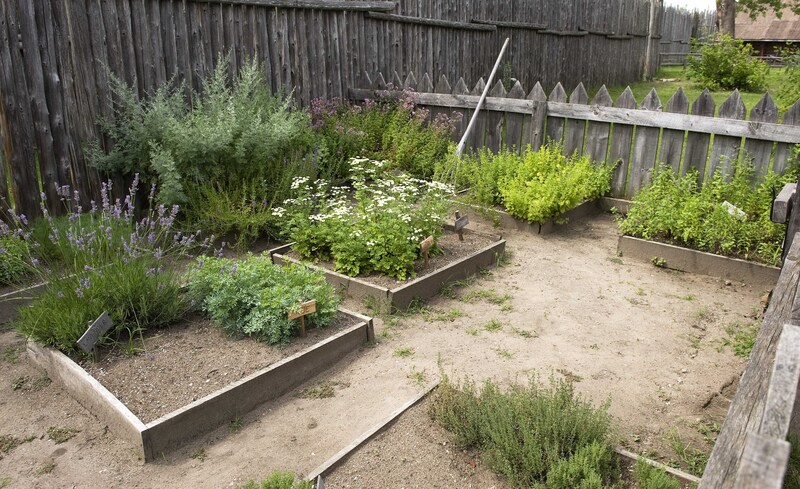Windproofing Your Garden: Tips and Tricks
Posted on 02/06/2025
Windproofing Your Garden: Tips and Tricks
Are your precious plants being buffeted by windy weather? Don't despair! Windproofing your garden is essential for protecting delicate blooms and ensuring your outdoor space thrives throughout every season. In this comprehensive and SEO-optimized guide, you'll discover the most effective garden windproofing techniques, from clever fence placement to planting robust windbreaks. Keep reading to unlock actionable advice, interesting facts, and expert solutions to keep your garden safe from strong winds!
Why Windproofing Your Garden Matters
Before diving into the best windproofing tips for gardens, let's clarify why wind protection is so important. High winds can cause:
- Physical damage to leaves, stems, and flowers
- Soil erosion and drying out of bedding areas
- Root disturbance, especially for young or shallow-rooted plants
- Pollination problems due to lost pollen
- Chilling of plants, even during milder temperatures
By windproofing your garden, you'll boost plant health, enhance your garden's beauty, and reduce costly replanting or repairs.
Assessing Your Garden's Wind Conditions
Understanding the wind patterns in your garden is the first step. Spend some time observing:
- The direction of prevailing winds (use a windsock or ribbons for reference)
- Areas that get gustier than others - corners, open lawns, or hilltops
- Physical signs of wind damage on existing plants
This baseline assessment helps you determine where garden wind protection is most needed.

Clever Windbreak Solutions for Every Garden
The most important strategy in garden windproofing is establishing effective windbreaks. They disrupt wind flow, reducing its speed and intensity.
Natural Windbreaks
- Hedges - Planting dense, multi-layered hedges is one of the best ways to slow down strong winds. Consider species like hawthorn, holly, Elaeagnus, privet, or hornbeam. They offer year-round wind resistance and double as wildlife shelter.
- Trees - Rows of trees provide taller wind barriers. Use quick-growing varieties like willow, alder, or poplar for the fastest protection. Space them wisely: stagger for denser wind reduction.
- Shrub borders - A mix of shrubs of differing heights can be very effective. Combine evergreen and deciduous types for seasonal interest and layered shelter.
Structural Windbreaks
- Garden fences - Install semi-permeable fencing, such as slatted wood or mesh. These break up the wind better than solid fences, which can create damaging turbulence on the leeward side.
- Trellises - Support climbing plants like clematis or honeysuckle for a decorative living wall that reduces wind.
- Screening panels - Bamboo screens or woven willow panels look attractive and are easy to move as you develop your garden plan.
Best Plants for Windy Gardens
Choose wisely! Not all plants are equally suited to exposed conditions. If you want a resilient space, select wind-tolerant plants for your garden's trickiest spots.
Top Choices for Hardy Wind-Resistant Plants
- Grasses: Pampas grass, miscanthus, and festuca naturally bend and recover after strong gusts.
- Evergreen shrubs: Escallonia, Griselinia, and tamarisk resist salt-laden winds near the coast.
- Groundcover: Hardy geraniums, thyme, creeping juniper, and cotoneaster hug the ground and reduce soil exposure.
- Tough perennials: Sedum, lavender, Eryngium (sea holly), and achillea cope well in open positions.
Tip: Plant densely and group together. Plants shelter one another, minimizing individual exposure to the wind.
Garden Design Strategies for Windproofing
Smart design can enhance your garden's wind resistance just as much as fences and planting schemes. Here's how:
Create Sheltered Microclimates
- Position seating or delicate plant beds in the lee of your home, a wall, or established trees.
- Use L-shaped or curved beds and walls to deflect and diffuse wind energy.
Layer Your Landscape
- Staggered rows of plants rather than formal single species hedges break up wind speed gradually.
- Graduated heights (groundcover, shrubs, then taller trees) soften the force of gusts.
Add Water Features and Rocks
- Ponds and large boulders act as natural windbreaks and microclimate creators.
- Bonus: Water increases humidity, helping to offset the drying effect of wind on foliage and soil.
Practical Tips for Windproofing in All Seasons
As wind conditions change with the weather, it's useful to have adaptable strategies at the ready. Here are some useful windproofing ideas for ongoing success:
- Stake and tie vulnerable plants - Secure tall or young trees and floppy perennials early in their life for better anchoring.
- Mulch beds generously - A deep layer of mulch (bark, compost, or gravel) helps prevent wind erosion and preserves soil moisture.
- Use windbreak netting - Temporary mesh screens are ideal for protecting newly planted areas or vegetable patches during their most delicate stages.
- Repair and maintain structures - Check fences, trellises, and stakes routinely for damage and ensure they're firmly anchored.
- Rotate garden features - Move pots, screens, and lightweight furniture to safer spots ahead of forecasted storms.
How to Windproof Vegetable Gardens
Wind isn't just a problem for ornamental spaces - your vegetables benefit from windproofing too! Tender crops and leafy greens in particular can be torn, battered, or desiccated by blustery conditions.
- Erect windbreak netting around raised beds or allotments, especially in exposed locations.
- Use companion planting: Plant taller crops like corn or sunflowers upwind of shorter, fragile varieties to provide a living barrier.
- Opt for row covers - Lightweight horticultural fleece shelters seedlings from the worst gusts while allowing light and rain to pass through.
- Cover soil between crop rows with straw, cardboard, or living mulch to prevent erosion.
Windproofing Small Urban Gardens and Balconies
Even compact spaces can suffer from damaging winds, especially in high-rise settings. Here's how to keep your balcony or patio garden windproof:
- Choose sturdy containers: Opt for heavy terracotta or concrete planters that won't topple over in a breeze.
- Group pots together for shared protection and stability.
- Use outdoor screens or lattice backed up with trailing plants for privacy and wind shelter.
- Secure decor - Attach ornaments, trellises, and shelving firmly to walls to prevent accidents.
DIY Windproofing Projects for Your Garden
You don't need a big budget to create effective garden wind barriers or improve your space's wind resistance. Try these easy DIY projects:
- Wattle fences: Weave thin branches between sturdy uprights for an attractive, eco-friendly fence.
- Upcycled pallets: Stand wooden pallets on end for quick windbreaks around veggie plots or compost bins.
- Lashed bamboo screens: Tie lengths of bamboo into a simple but effective barrier for small gardens.
Common Mistakes to Avoid When Windproofing Your Garden
- Installing solid barriers - Solid walls or fences can cause wind to whip over and increase turbulence, potentially doubling wind damage for plants behind them.
- Neglecting anchor points - Always ensure fences, posts, and structures are deeply anchored and secure.
- Ignoring plant spacing - Overly dense hedges or rows reduce the effectiveness of windbreaks by blocking too much wind, which can then swirl over the top. Go for a 50-70% wind-permeable design for best results.

Frequently Asked Questions About Garden Windproofing
How tall should a windbreak be for effective protection?
Rule of thumb: A windbreak provides shelter measuring up to 10 times its height downwind. For example, a 2-meter-tall hedge could protect an area up to 20 meters behind it.
What is the best fencing for a windy garden?
Semi-permeable fencing allows some wind through while reducing speed, making it ideal for windy gardens. Think slatted wood, mesh, or lattice designs with 30-50% open space.
When is the best time to plant a hedge for wind protection?
Autumn and early spring are the ideal times for planting windbreak hedges - the soil is moist, and roots have time to establish before the growing season or harsh winter winds.
Are there any fast-growing plants for instant wind protection?
Willow, poplar, and Leyland cypress are popular choices for rapid coverage. Pair these with slower, longer-lived species for a lasting mix of speed and durability.
Windproofing Your Garden: The Path to a Healthier Oasis
Don't let wild winds spoil your gardening dreams! Whether you're cultivating a peaceful flower bed, a bursting vegetable patch, or a tranquil patio retreat, introducing thoughtful windproofing measures will make your outdoor space more enjoyable and successful.
- Assess your site's wind exposure and target your interventions where they'll have the most impact.
- Mix natural and structural windbreaks to shield against gusts and create attractive garden features.
- Choose and place plants wisely - embrace hardy varieties and strategic groupings for extra resilience.
- Adapt and maintain your windproofing strategies as your garden grows and changes over time.
With these techniques for windproofing your garden, you'll not only protect your precious plants but also create a lush, calm haven for years to come. Start today and let your garden flourish - no matter how hard the wind blows!

